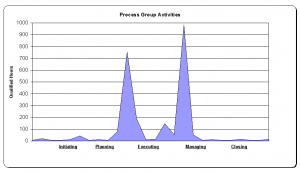Process Groups
After we published our first Scrum Posters, I was asked if we were going to create Non-Scrum Posters. The answer is YES! Today we completed our (first) one-of-a-kind Pictofigo Project Management poster. The Project Management Process Groups poster is now available to purchase from Cafepress. There are links below and a new link in the header of this site. If you wish to apply this image to your own products, just go to Premium Pictofigo and purchase the high resolution file.
Are you studying for, or have recently passed, a popular project management exam? PROJECT MANAGEMENT PROCESS GROUPS captures five process groups and playfully details several of the activities of each. Includes Initiating, Planning, Executing, Monitor & Controlling, and Closing.
Mini Poster (Size: 17" x 11") just $14.99
Small Poster (Size: 20" x 13") just $19.99
Large Poster (Size:34.5" x 23") just $24.99



